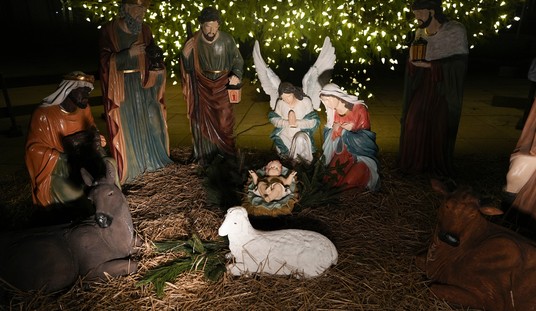The just-concluded holiday retail season continues to look strong, at least in top-line numbers provided by Spending Pulse. Sales increased more in 2010 than any time in the last four years, a sign that consumers may have found a comfort level despite the burdens of high unemployment. The data also shows that shoppers began returning to higher-end retailers rather than concentrate on discounters:
Americans spent more on clothes, shoes, luxury goods and electronics in December than a year earlier, extending retail sales momentum that had been building since August, according to data released Wednesday.
Figures released by MasterCard Advisors’ SpendingPulse, which tracks spending in all forms including cash, show consumers treated themselves to new clothes and shoes while they shopped for gifts during the most important period of the year for retailers.
Jewelry sparkled, and online sales soared. Even home furnishings and furniture — pummeled by the housing market slump — eked out a small increase for the period from Nov. 28 through Saturday. Meanwhile, electronics sales, hurt by aggressive discounting of televisions, rose only slightly.
Analysts are forecasting that holiday sales — which usually produce about 40 percent of retailers’ annual profit — rose faster than in any year since 2006.
Profit, though, may still be the problem. The larger retailers will begin disclosing their sales and profit numbers this week, and the Commerce Department will have a report out a week from Thursday on the economic activity in retail. Heavy discounting will erode some of the power of the top-line sales numbers if it again took that to draw consumers into the stores.
The new data does show some indication that shoppers looked for higher-end products to a greater degree than in the last few years. Abercrombie & Fitch also operates the lower-priced Aeropostale and claims that shoppers returned to the A&F store this season. Saks and Macy’s are expected to show gains in stores open for more than a year; so is Target, but primarily for its discounting through its branded credit cards. Assuming that these show a trend in holiday shopping, bottom lines might be better than one might expect.
That’s still not true in electronics, however. The deep competition, probably most felt with online retailers, drove heavy discounts on almost-flat sales. That seems a little unusual, given the innovation and new products available, but most of those were higher-ticket items anyway — iPads, Xbox and the new Kinect systems, and the ubiquitous big-screen TVs, where the most aggressive discounting appears to have taken place. It may be that consumers purchased more but limited their buys to smaller-ticket items, which would produce a boost for clothing and perhaps jewelry on the lower end, but leave electronics and home furnishings to flat or incrementally improved sales, which is what Spending Pulse reported.
So far, the news looks good from the holiday retail season, although again, the final judgment relies on the bottom line, not the top line. At least consumers seem ready to return to the modestly-good levels of spending seen in 2007 for a few weeks, and if so, the major retailers should survive well for another year on the momentum.







Join the conversation as a VIP Member